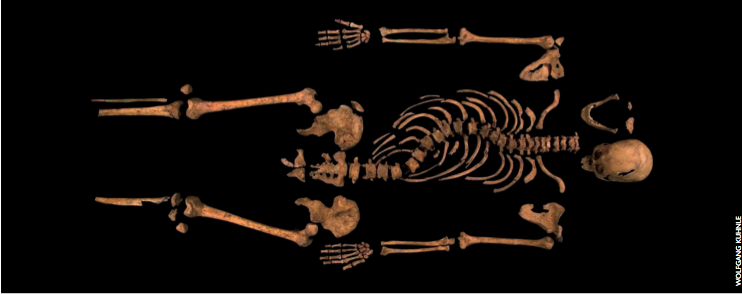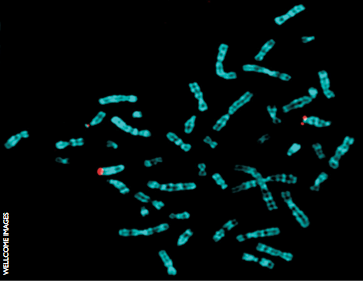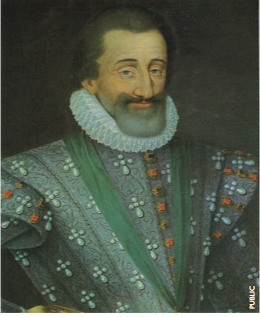TUESDAY, 20 MAY 2014
Europe’s relationship with royalty has often been a troubled one. When warring dynasties weren’t battling to replace one another, oppressed members of the populace were plotting revolutions, or fanatics made assassination attempts. Later, rulers deliberately or accidently decimated the last resting places of their forebears, leading to the loss of the bodies of kings and queens. However, there has been a recent trend to excavate and identify the remains of these lost royals across Europe. The skeleton of Richard III was discovered recently in a car park in Leicester, but the remains of the Romanovs, the last Tsars of Russia, and the embalmed head of Henri IV of France have also been unearthed. Archaeologists from the University of Winchester are hoping to give Alfred the Great the same treatment. A variety of scientific techniques drawn from forensics, archaeology, genetics, cancer-care and chemistry are helping to give names, and a royal reburial, to bones long thought lost.The Romanovs were Russia’s ruling family until the Russian revolution in 1917. They disappeared from history, and were widely thought to have been brutally executed by the Bolsheviks. Remains presumed to belong to some members of the Tsar’s family were found in 1918 and reburied, although their identity was uncertain. However, the remains of two of the Tsar’s children were not found in this mass grave. The putative Romanov remains were exhumed in the 1990s to see if they could be definitively identified. Part of the identification process of the bones included taking DNA samples from them. Prince Philip, the Duke of Edinburgh, is a maternal-line relative of the last Tsarina of Russia and thus shares his mitochondrial DNA (mtDNA) with her (as this is passed from mother to child). When the mtDNA sequences of Prince Philip, the Tsarina and her children were compared, they turned out to be a match. This strongly suggested the family group were the Romanovs.
The missing bodies of two of the youngest Romanovs fostered the myth that some members of the Tsar’s family had survived (most famously the Tsar’s daughter, Anastasia), with several Romanov impersonators popping up as recently as the 1980s. Historical reports of the burial of the missing Romanovs allowed archaeologists to track down the site where the two bodies were likely buried and study the remains. The discovery of dental fillings made of silver amalgam in the teeth suggested that the bodies belonged to aristocrats, another piece of evidence supporting the hypothesis that they were the missing Romanovs. With the DNA identification of the large family group, the Romanov remains could be respectfully buried and their ghosts laid to rest.
DNA technology was central to the identification of the body of Richard III by scientists at the University of Leicester. His identity was established by finding two living descendents of Richard’s mother and sister, who carry the same mtDNA as the monarch. A multi-disciplinary approach was used to identify the skeleton by additional methods, drawing on classical archaeological techniques such as the position of the bones in the grave–in this case, with hands apparently bound before him. Osteology (the analysis of bones) revealed a distinct curvature to the spine of the skeleton. This was diagnosed as scoliosis by Cambridge University’s Piers Mitchell, a relatively common condition that would have developed while the last Plantagenet king was a teenager. The wounds on the skeleton suggested a violent death, possibly in battle.
Chemical methods were also key to identifying the bones as belonging to Richard III. Direct radio-carbon dating of the bones gave an idea of their age and isotope analysis suggested what kind of diet the individual would have had. Both methods work on the principle that as we grow and consume food, we absorb radioactive material from our environment in the form of carbon and nitrogen isotopes, which slowly lose their radioactivity at a regular rate over time. These techniques informed scientists that the bones were from the right age–late 15th century–to belong to Richard III, and also belonged to someone who ate a much better diet than your average medieval peasant–the diet of a high-status nobleman. Finally, experts performed facial reconstruction at Dundee University to bring the skull ‘back to life’.
Technology normally deployed in modern medicine to detect cancers and head injuries was used to confirm the identity of an embalmed head reputed to be that of Henri IV of France. Henri was embalmed and buried in 1610, but didn’t rest in peace for long. Amidst the uproar of the French Revolution, many dead kings were dug up in the 1790s and the putative head of Henri ended up in the hands of private owners, most recently in the attic of a retired tax collector!
An X-ray computed tomography (CT) scan is normally used to create a 3D X-ray of tumours, bone fractures or bleeding on the brain. A team of forensic specialists, headed by Philippe Charlier, used CT scanning to look underneath the embalmed soft tissue of the head to the bones underneath. By comparing their scans to busts and portraits of the king, they identified key aspects of bone structure with strong similarity to known images of Henri IV. They were even able to identify a blemish on the side of his nose, visible on both the portrait and the embalmed head, and evidence of a pierced ear. The state of the embalmed head’s dental health and baldness also matched with descriptions of King Henri IV.
However, recent DNA evidence has muddied the waters. One study found a match between DNA found from the embalmed head and blood samples purported to come from one of Henri IV’s descendants, Louis XVI of France. However, a second DNA test against living descendants of France’s royal family, the Bourbons, didn’t match that of the embalmed head. However, over 400 years it is possible that contaminating DNA has obscured the real genetic profile of the skull, and that researchers were simply amplifying the DNA of the many people who must have handled the head since its owner’s death. In such a situation, with no uncontaminated DNA samples available, only the physical evidence from the head can be used to draw firm conclusions–enough for Henri IV’s head to be interred in the cathedral of Saint- Denis, France.
Alfred the Great, 9th century king of Wessex (south-western England), is the latest ‘lost royal’ to be given the ‘CSI treatment’. His bones were moved several times after his death, being ultimately lost somewhere in the grounds of Hyde Abbey, near Winchester. The abbey has a long history of upheaval, first by Henry VIII in the 1500s, and later when a prison was built on the site. It was assumed that Alfred’s bones were dumped in a mass grave in the 18th century. Researchers at Winchester University considered this a promising last resting place for Alfred, but radiocarbon dating showed that the bones from the mass grave were 400 years too young to be the Wessex king. They are now examining a pelvic bone excavated on a previous dig which is thought to be from the correct period. With little other skeletal evidence, the chances of unequivocally identifying the remains as belonging to Alfred seem slim. The lost king of Wessex, while Great, may have to remain anonymous.
Charlotte Houldcroft is a temporary lecturer at the Department of Archaeology and Anthropology




